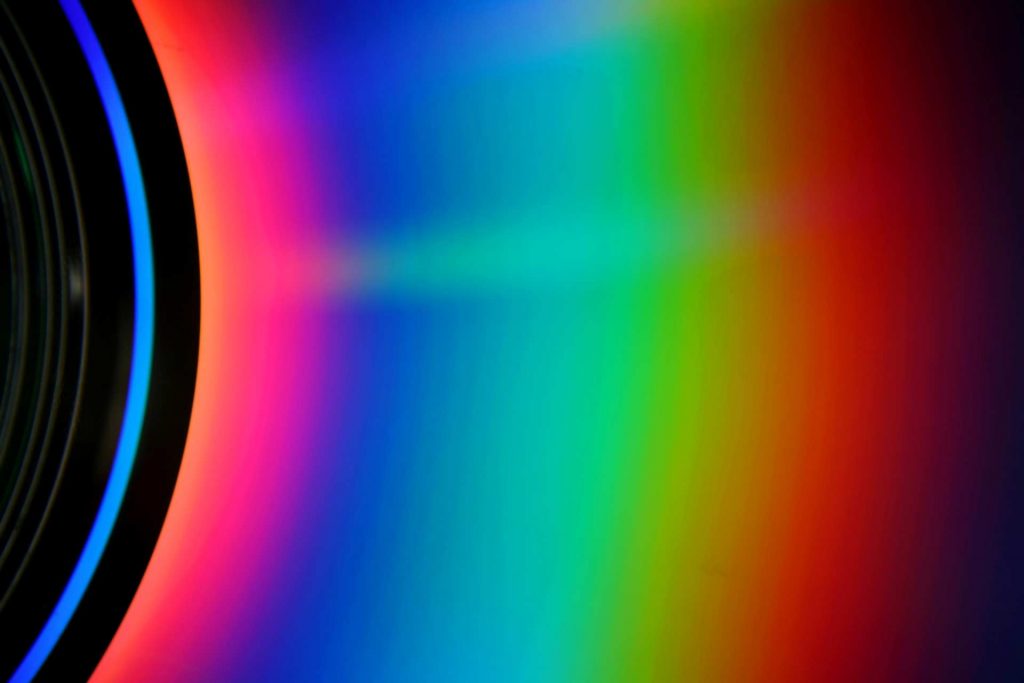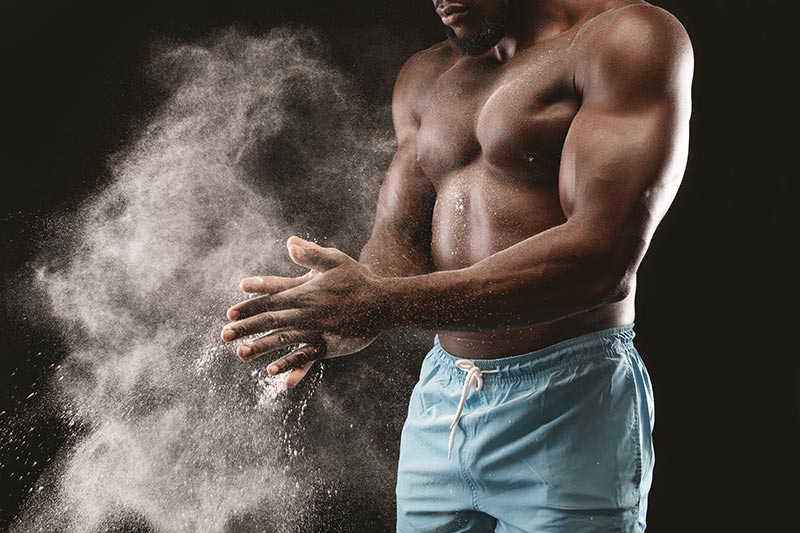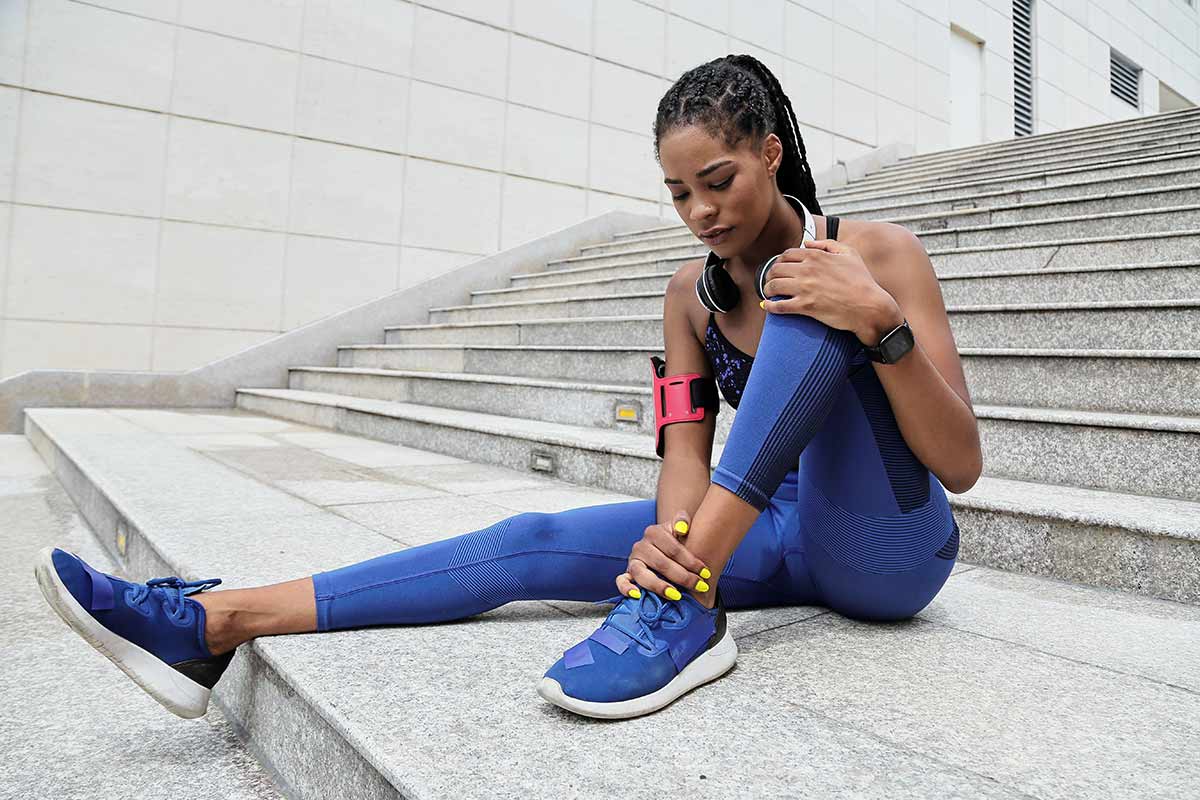Professional athletes are often considered to be the modern day gladiators. They are the heroes that inspire courage, determination, and help us to believe in the impossible.
Like the gladiator, their road while glamorous at times, is riddled with both overuse and chronic injuries as well as muscular and skeletal ruptures from one time traumas.
Whether you played collegiate NCAA level sports, had a professional career, or are a devoted weekend warrior, few athletes escape the tyrannical pain of sports related injuries. An injured athlete is in a unique position, generally they are not weak or ill. For most athletes, their health and fitness are excellent. Addressing the health of an injured athlete requires a unique approach, particularly when compared to other portions of the general populace.
While certainly physical therapy, massage, and other forms of therapeutic practices can be highly successful in treating sports related injuries, what about those nagging connective tissue issues that never seem to really go away?
Track athletes will often live many decades with searing pain in the connective tissues of the hamstrings, basketball players are well known for knees that may ache for a lifetime, and for baseball and tennis players the rotator cuff of the shoulder is a never ending segway into limited mobility and pain during every day activity.
So, how can infrared sauna therapy help heal connective tissue wounding in the joints of athletes and retired professional players?
How is it possible that a light frequency can possibly significantly heal chronic long term injuries that may have been less responsive to other therapeutic modalities?
This article will explore the impact that the infrared light spectrum has on connective tissues, as well as the importance of thorough detoxification protocol to rid the body of lactic acid poisoning, and ban overload of cortisol, both of which are often a bi-product of years of intense training and competition.
Near Infrared Light The Diamond In The Rocks For Sports Related Injuries: How Does This Light Frequency Heal The Joints?
- Reduce Inflammation In The Joints
- Heal Tears and Ruptures To Connective Tissues
- Improve Oxygenation Of The Blood Stream
‘High profile study reveals that Near Infrared Light heals Division I NCAA athletes faster than any other form of physical therapy…’ (1)
Athletic endeavors demand repetitive movement in order to master skill sets. While this can render an individual successful on the field, it can also create long term damage from overuse to portions of the body. Sometimes these overuse injuries, despite attention and care from sports injury experts, can last a lifetime and continue to create pain for individuals even decades after retirement.
There is a preciousness to the tendons and ligaments that serve to create exceptional mobility of the joints. Unfortunately, unlike muscles and bones, it can take a very long time to heal these cognitive tissues.
The National Institute of Health (NIH) performed an extensive study involving 349 student athletes actively participating in Division I NCAA athletics. The subjects had all experienced some form of ligament tears, tendonitis, or strains and sprains. The athletes were participating in a wide variety of sports, and were all looking to get back to the field, court, and track in healthy bodies. (1)
This study published by NIH used the 830 nm (near infrared light) spectrum of light to heal cognitive tissue injuries to speed up Return To Play (RTP) turn around. RTP is paramount for most athletes, particularly when their livelihood, or scholarship depends upon it.
“For any motivated athlete, RTP may be the most important factor post injury based on the resolution of pain and inflammation and repair to tissue trauma. 830 nm phototherapy significantly and safely reduced the RTP in dedicated university athletes over a wide range of injuries with no adverse events.” (1)

The near infrared light spectrum has a very special role to play in injury recovery for athletes from a wide range of sports. But why? How does the light spectrum serve to heal often complex overuse injuries as well as one time traumatic ruptures of the tendons?
Understanding the power of the near infrared light spectrums requires a gaze toward the microscopic level of cellular activity. Moving beyond what can be observed with the naked eye into the life of the individual human cell holds the answer. Within each human cell is a mitochondria, responsible for energy conversion of each cell. The efficacy of mitochondrial function directly impacts overall health of the body. Surrounding the mitochondria is a membrane, called cytoplasm C. (2) Within this protective barrier are photoreceptors that absorb light, these particular photoreceptors are sensitive to but welcome in the near infrared light spectrum.
As this invisible light band is absorbed into the walls surrounding the mitochondria a great energy conversion system begins. Mitochondrial metabolism begins to effectively improve ATP (Adenosine Triphosphate) production:
“ATP is constantly formed and broken down as it participates in biological reactions and it is central to the health and growth of all life. Without it, cells could not transfer energy from one location to another, making it impossible for organisms to grow and reproduce!” (3)
A study published by NIH provides evidence of the deeply impactful relationship between the near infrared light and mitochondrial function:
“This result correlates well with the biochemical picture, reflected in a significant increase in the ATP levels at 10 Hz, when compared to 100 Hz or CW. The authors of the study interpret the maximum in ATP production at 10 Hz by assuming a greater absorption of 810 nm photons by mitochondrial complex-IV at this frequency.”
***Expert Tip: The near infrared spectrum of light is measured between 650-900 nanometers. This is the place on the light spectrum where the color red begins to merge with the invisible spectrum of infrared light, but before frequency evolves into the mid and far infrared light. (4)
As mitochondrial function is improved in response to near infrared light absorption, ATP production is enhanced to saturate the blood stream with more oxygen. When married with improved circulation this nutrient rich blood is delivered throughout the body efficiently. When locations of inflammation are steeped in oxygen rich blood injuries begin to heal and repair. When inflammation begins to reduce, pain is also alleviated, and generally athletes can begin to cautiously proceed forward with training and competition. (2)
Here is a detailed account of NIH’s published conclusion regarding elite level athletes treating injuries with near infrared light:
“Over a 15-month period, a total of 395 injuries including sprains, strains, ligament damage, tendonitis and contusions were treated with 1,669 sessions of 830 nm LED phototherapy (mean of 4.3 treatments per injury, range 2 – 6). Efficacy was measured with pain attenuation on a visual analog scale (VAS) and the RTP period compared with historically-based anticipated RTP with conventional therapeutic intervention.” (1)
In addition to the benefits to mitochondrial function in response to increased near infrared light exposure another key component necessary to experience full recovery from connective tissue injuries is collagen production.
Collagen, the protein partner to elastin, is most famous for its ability to create a youthful glowing skin complexion. Collagen as a major player in joint health is often overlooked by the masses as well as by medical professionals.
When collagen production is increased, so too is the rebuilding of healthy connective tissues at the cellular level. At every moment of every day old cells die off as new ones are born. As cellular replication occurs in response to its inner and outer environment it is possible to re-create entire portions of the physical body. This is the crux of why and how connective tissue injuries recover so effectively with exposure to the near infrared light. (5)
A study published by NIH reveals that collagen production is enhanced exponentially after just two hours of exposure to the near infrared light spectrum. While this study was originally performed for the purposes of reducing the biological expression of skin age, a by-product of the research also proved to be highly beneficial to parts of the body where collagen and elastin together weave a tapestry of rich strength such as or bone marrow, ligaments, and tendons. In a brief colloquial moment NIH’s publication on infrared light therapy and collagen states the following:
“Many reports have indicated that that IR may have a stimulatory effect on the proliferation of human fibroblasts and collagen synthesis during wound healing.” (5)
Like never before, the near infrared light spectrum affords athletes the ability to not only control pain stemming from connective tissue injuries, but ultimately heal these over-stressed regions of the body. No longer are athletic heroes forced into states of chronic pain due to overuse injuries of the joints. Near infrared light exposure may be a gateway out of painful injury into the dawning of a new future free from limited mobility and achy joints.
Far Infrared Light To Free The Athlete From Lactic Acid Poisoning

An often overlooked side effect of athletic endeavor is the summing of adrenaline to achieve massive physical feats. Without lactic acid the 400 meter sprinter would not be able to perform the final 100 meter kick at the end of the race, and the baseball player would be unable to slide home in the ninth inning to win the game.
Athletes rely on adrenaline and the release of cortisol to get the job done. This would be fine if the by-product of continued highly adrenalinalized states only occurred occasionally, but professional sports demands regular and frequent tapping into the body’s energy resources. Eventually the build up of lactic acid in the bloodstream can be toxic and places a huge toll on the internal organs.
Whether a weekend warrior or a high profile professional athlete, lactic acid, if not actively released from the body, can produce long term and devastating effects. Active detoxification protocol is paramount in keeping athletes in high performance conditions. (6)
The far infrared light as used in infrared saunas is superb as a detoxification method for its ability to penetrate into the soft tissues of the body. As internal temperatures are radically increase heavy perspiration ensues. This perspiration acts as a river way to draw toxins, including lactic acid out of the body. (7)
The skin is the largest of the body’s organs, so it makes sense to use this membrane to detoxify the body. This further alleviates stress on the kidneys and liver, that are often in overdrive for many athletes. As the body undergoes detoxification protocol, the health of the adrenal glands is ultimately restored and athletes will experience high levels of muscular recovery and overall energy.
By reducing toxic levels of lactic acid in the body through regular infrared sauna bathing, athletes can expect to have less downtime between workouts and higher levels of energy for game day.
High performance athletes would do well to incorporate regular infrared sauna bathing into their weekly program to ensure that both the body and mind are ready when it really matters.
Infrared Saunas To Nourish The Autonomic Nervous System
The balance of the autonomic nervous system can be thrown off when individuals spend too much of their time in survival or stress response. The very nature of athletic performance requires its participants to level up to states of hyper-vigilance and readiness. The will to win and succeed requires these states of being, however too much time spent on high alert can alter the balance of the autonomic nervous system.
The two primary branches of the autonomic nervous system are: Sympathetic dominance (fight or flight) and Parasympathetic dominance (rest and relaxation). It is only in the latter state that the body can begin the natural healing mechanism. When adrenaline is in overdrive, as is often the case for athletes, it can be difficult to draw the body back to states of relaxation. (8)
The heat, coupled with the lights of the infrared sauna, are an easy and effective means to aid athletes out of hyper-vigilance and highly stoked states of adrenaline back into relaxation where healing can occur.
Ever wonder why, despite huge output of energy it can be difficult to come down off the high of a game, race, or match? The reason is that the autonomic nervous system continues to pump the body full of adrenaline. Taking an infrared sauna regularly will draw the body back into active rest so that muscular, skeletal, and connective tissue healing can occur.
Athletes Can Step Into The Spotlight Of Health And Vitality With Regular Infrared Sauna Use
As determined heroes and courageous individuals willing to push the boundaries of the physical, athletes deserve to live in a body free from aches and pain. There are certainly many modalities available to achieve pain free living, but often traditional methods tend to be ineffective at addressing the athlete as a whole person.
Infrared sauna use for athletes, helps to not only relieve symptoms but actually create an internal environment of the body that is healthy and full of vitality. Cortisol shots are a typical go to option, though rarely address underlying injuries, but rather mask the pain to ensure high performance.
It is possible to heal connective tissues with infrared sauna use by improving the oxygenation of the body, improving circulation to decrease inflammation, and by building the supply of collagen. Athletes, with the aid of infrared sauna use, can not only live pain free but actually rebuild the tendons and ligaments of the body.
Additionally, energy levels and overall health can be improved by using infrared saunas to detoxify the body of cortisol and lactic acid needed for high performance while often polluting the body.
Athletes can relax in an infrared sauna, and stabilize the nervous system to create space for the body’s natural healing mechanism to do its job. It is important for the gladiators of our time who inspire the rest of us to be brave, and aim for the seemingly impossible, to live a life free of painful lingering injuries.
Sources Cited:
- https://www.ncbi.nlm.nih.gov/pmc/articles/PMC4846838/
- https://www.ncbi.nlm.nih.gov/pmc/articles/PMC6462613/
- https://www.luminultra.com/what-is-atp-and-what-does-it-do/
- https://www.shimadzu.com/an/ftir/support/tips/letter9/nir1.html
- https://www.ncbi.nlm.nih.gov/pmc/articles/PMC2687728/
- https://www.healthline.com/health/lactic-acidosis
- https://www.ncbi.nlm.nih.gov/pmc/articles/PMC4935255/
- https://connects.catalyst.harvard.edu/Profiles/display/Concept/Autonomic-Nervous-System


